Reading in Progress
These are active notes while I make my way through the book. Expect updates, revisions, and maybe contradictions until I finish.
You can walk coast to coast, but new worlds demand wings.

Summary in Four Sentences (or Less)
Turns out, being smart and successful doesn’t make you fun to work with. Who knew? This book is a slap-in-the-face reminder that your bad habits are showing and they’re holding you back.
Chapter Map
| Chapter | In 5 Words |
|---|---|
| Chapter 1: You Are Here | Lost self-awareness blinds successful leaders |
| Chapter 2 Enough About You | Coaching begins with confronting ego |
| Chapter 3 The Success Delusion, or Why We Resist Change | Success breeds denial and resistance| |
| Chapter 4 The Twenty Habits | Quit toxic patterns to grow |
| Chapter 5 The Twenty-First Habit Goal Obsession | Overfocus on goals distorts values |
| Chapter 6 Feedback | Honest feedback reveals blind spots |
| Chapter 7 Apologizing | Sincere apology initiates real transformation |
| Chapter 8 Telling the World, or Advertising | Public commitment reinforces perceived change |
| Chapter 9 Listening | Respectful listening builds mutual understanding |
| Chapter 10 Thanking | Gratitude sustains relationships and respect |
| Chapter 11 Following Up | Consistency cements credibility and change |
| Chapter 12 Practicing Feedforward | Future-focused feedback fuels growth |
| Chapter 13 Changing: The Rules | Progress demands bending old rules |
| Chapter 14 Special Challenges for People in Charge | Self-awareness prevents leadership disconnects |
| Coda: You Are Here Now | Presence matters more than pursuit |
| Appendix | Evaluate, reflect, and refine leadership |
Who Should Read It
TBD
Content coming soon, after I finish reading.
Book Discovery
Our leadership book club at work selected this title in September 2025.
Impact
TBD
Content coming soon, after I finish reading.
Favorite Quotes
Quote
“Over time these ‘minor’ workplace foibles begin to chip away at the goodwill we’ve accumulated in life.”
Marshall Goldsmith in What Got You Here Won’t Get You There (1)
This reminds me of something our realtor told us when we were selling our house: fix as many imperfections as you can, because you never know which small flaw will be the straw that breaks the camel’s back. Buyers are rarely turned off by one big issue—it’s usually the accumulation of little details that adds up.
Reducing foibles reduces friction in workplace relationships.
Also, how fun of a word is “foible”!
Quote
“Despite your demonstrable success and laudable self-esteem, you might not be as good as you think you are.”
Marshall Goldsmith in What Got You Here Won’t Get You There (1)
I think this quote captures one of the book’s central messages—and it hits close to home. I often find myself swinging between arrogance and imposter syndrome, struggling to land in a steady middle ground. The reminder that success doesn’t always equal self-awareness really resonated with me. Maybe one day I’ll learn how to balance that spectrum with more consistency.
Quote
“People will do something—including changing their behavior—only if it can be demonstrated that doing so is in their own best interests as defined by their own values.”
Marshall Goldsmith in What Got You Here Won’t Get You There (1)
This is one of those quotes where in hindsight it seems obvious.
Quote
“Almost everyone I meet is successful because of doing a lot of things right, and almost everyone I meet is successful in spite of some behavior that defies common sense.”
Marshall Goldsmith in What Got You Here Won’t Get You There (1)
Quote
“Less me. More them. Equals success.”
Marshall Goldsmith in What Got You Here Won’t Get You There (1)
Atomic Notes
WIP
Some puzzle pieces haven’t been snapped in yet. As I process these notes into atomic form, links will start appearing to connect the bigger picture.
Chapter 1: You Are Here
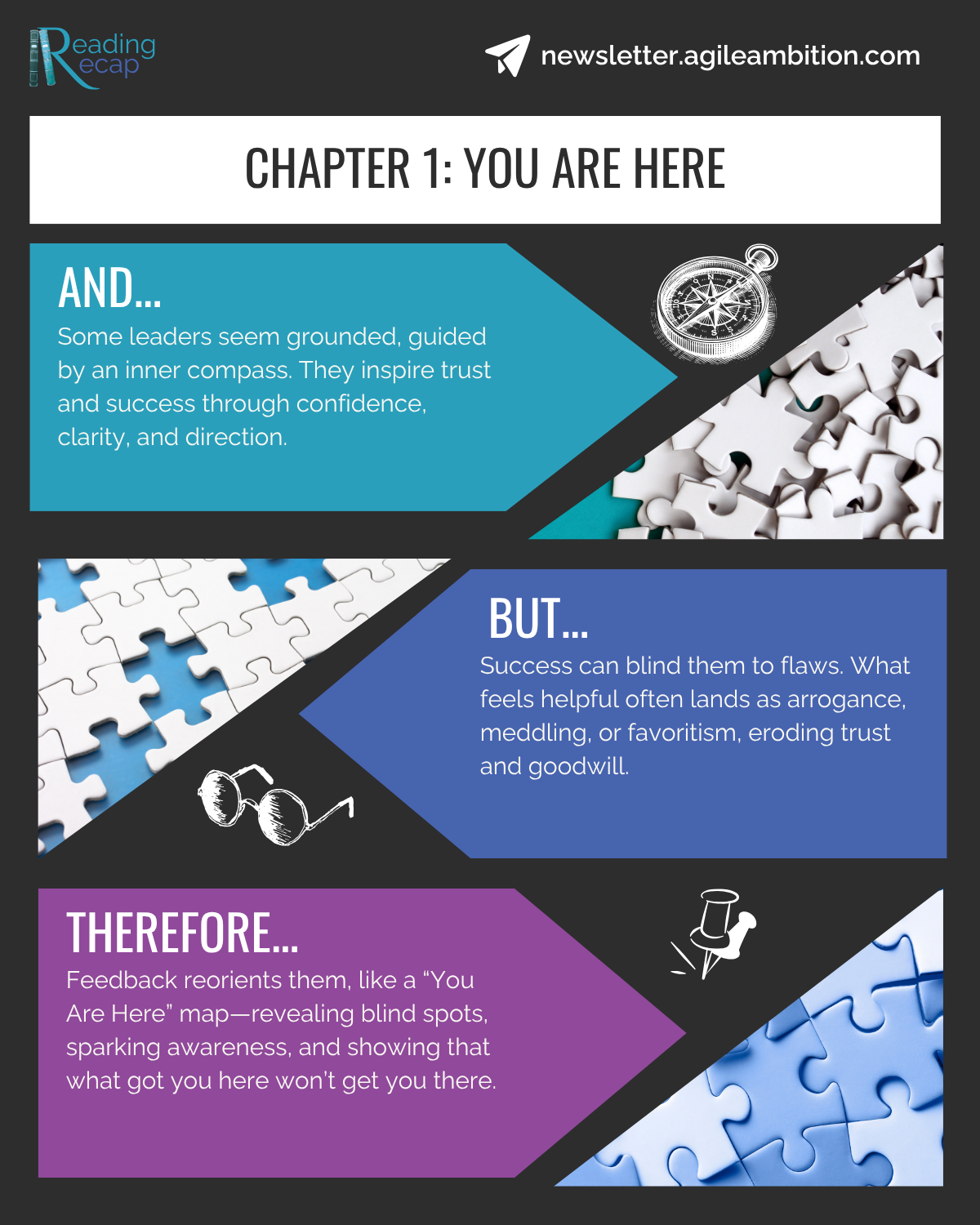
- Orient to Your Impact
- Success Masks Blind Spots
- Ideas Heard as Orders
- Overhelping Stifles Others
- Favoritism Breeds Cynicism
- Ego Over Empathy Backfires
- Tiny Habits, Big Costs
- Feedback as GPS
- Impact–Intent Disconnect
- Small Tweaks Fix Bad Habits
- Separate Ideas from Orders
- Misread Intent Without Feedback
- From Here to There
- Past Wins, New Liabilities
- Role Models Possess an Internal Compass
Chapter 2: Enough About You
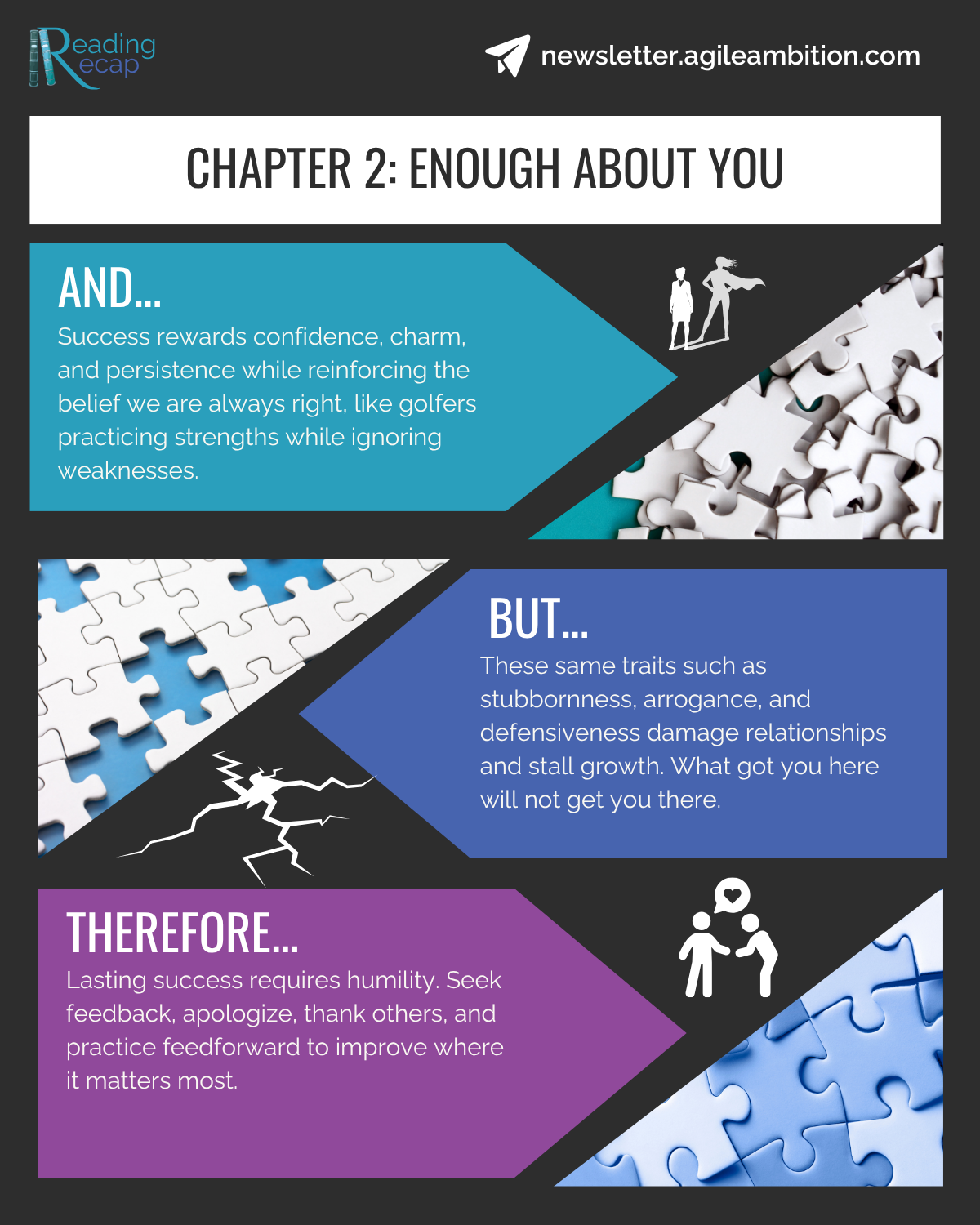
- Success Habits Can Become Barriers
- Importance of 360 Degree Feedback
- Apology as Reset
- Publicize Your Change Efforts
- Follow Up Religiously
- Listening Without Prejudice
- Power of Feedforward
- Delusion of Success
- Strengthening Weaknesses
- Humility as Growth Catalyst
Chapter 3: The Success Delusion, or Why We Resist Change
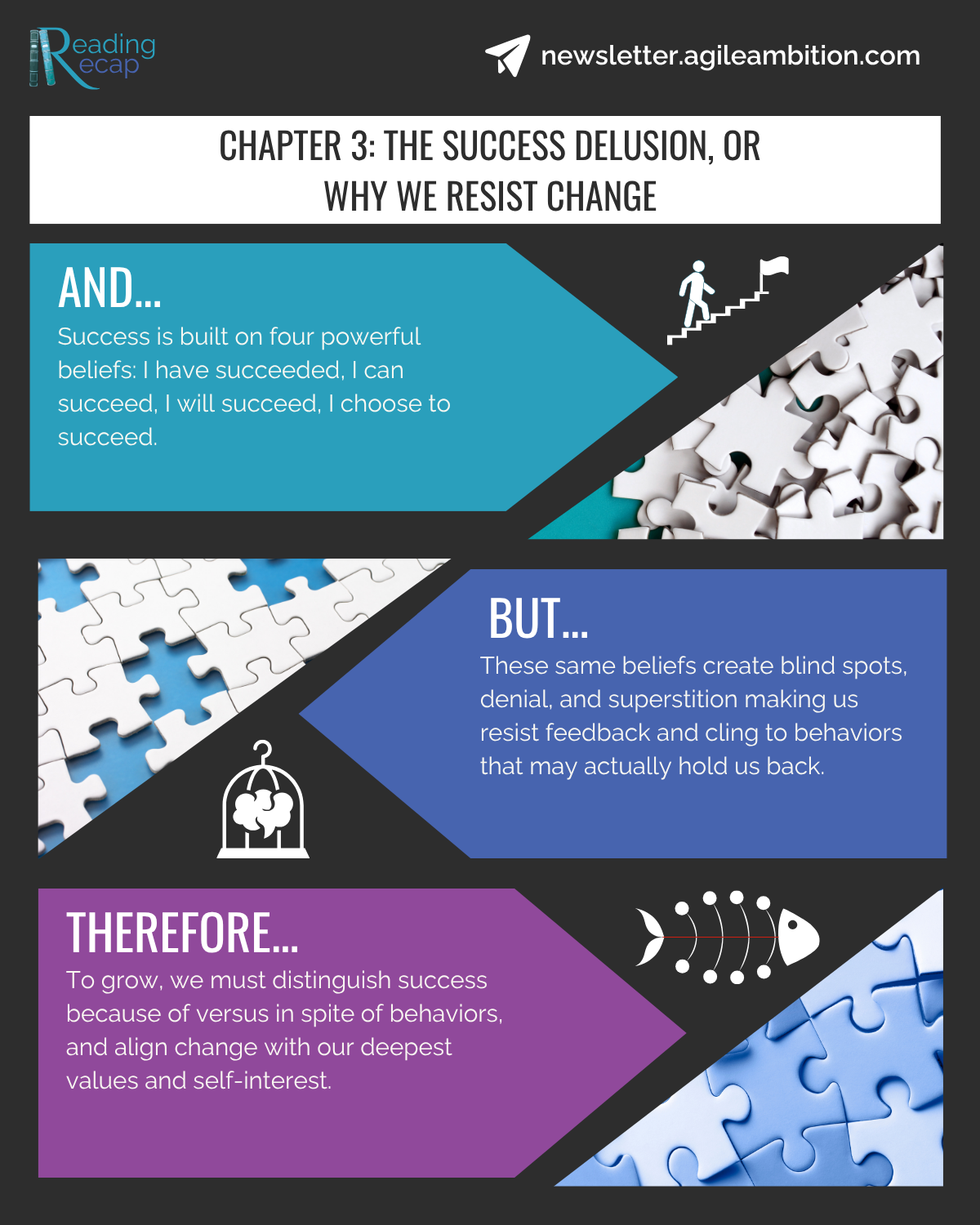
- Three-Part Resistance to Feedback
- Four Beliefs That Block Change
- Highlight Reel of Success
- Trap of Attributing Success to Behavior
- Optimism Driving Overcommitment
- Self-Determination vs. Change
- Superstition Trap in Success
- Distinguishing Because vs. In Spite
- Cognitive Dissonance in Change Resistance
- Persuasion Works by Appealing to Values
- Hot Buttons for Change
- Overcommitment Blocking Application
- Rivalry and Legacy as Motivators
Chapter 4: The Twenty Habits
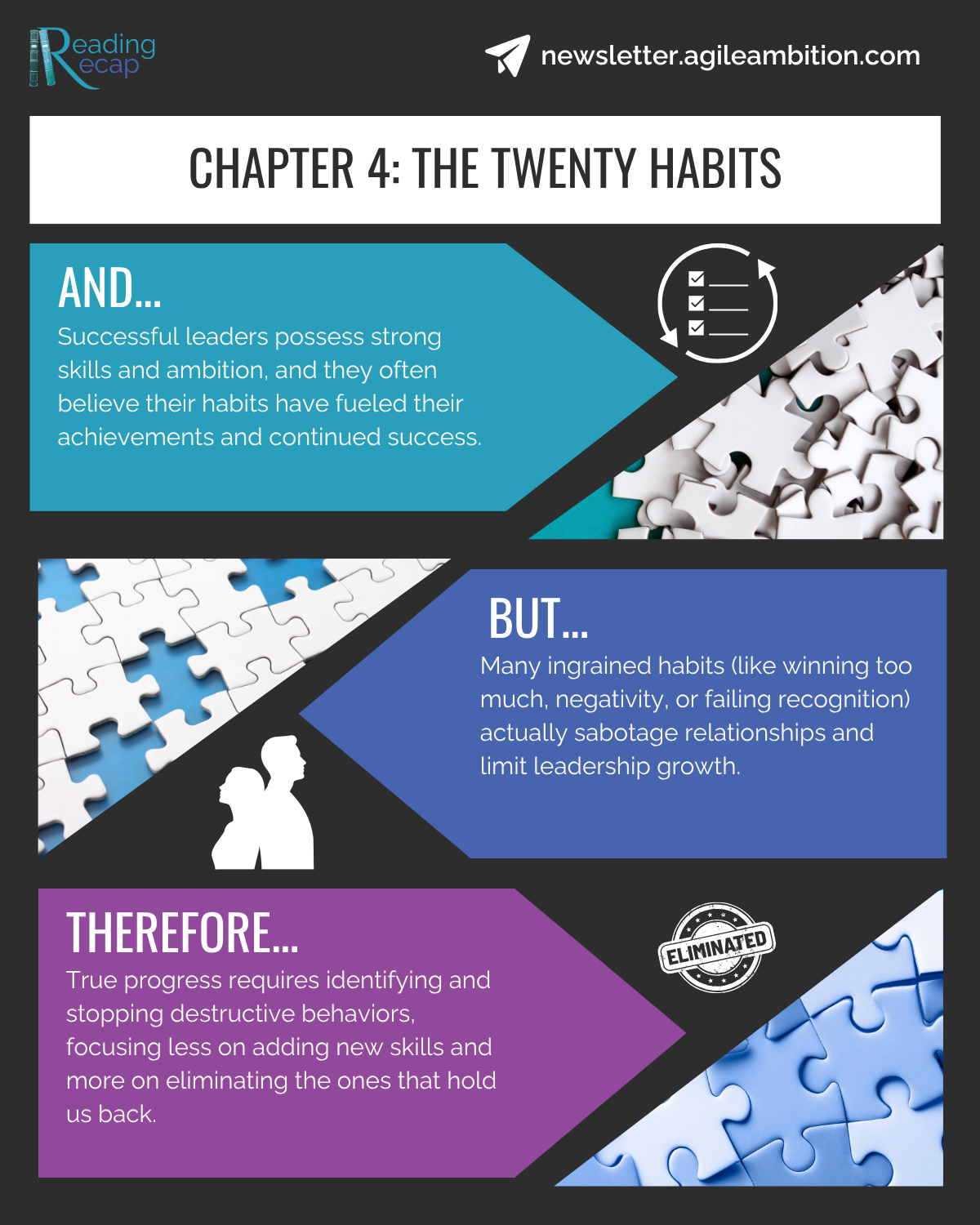
- Knowing What to Stop
- “To-Stop” List Practice
- Inspired Neutrality
- Say Nothing Tactic
- Mission Neutral Coaching
- Higher = Behavioral
- Bedside Manner Effect
- Winning Too Much
- Fallacy of Added Value
- Practical Pause
- Pick the Right Battles
- Simple, Not Easy
- Less Me, More Them
Cheatsheet
Chapter 5: The Twenty-First Habit: Goal Obsession
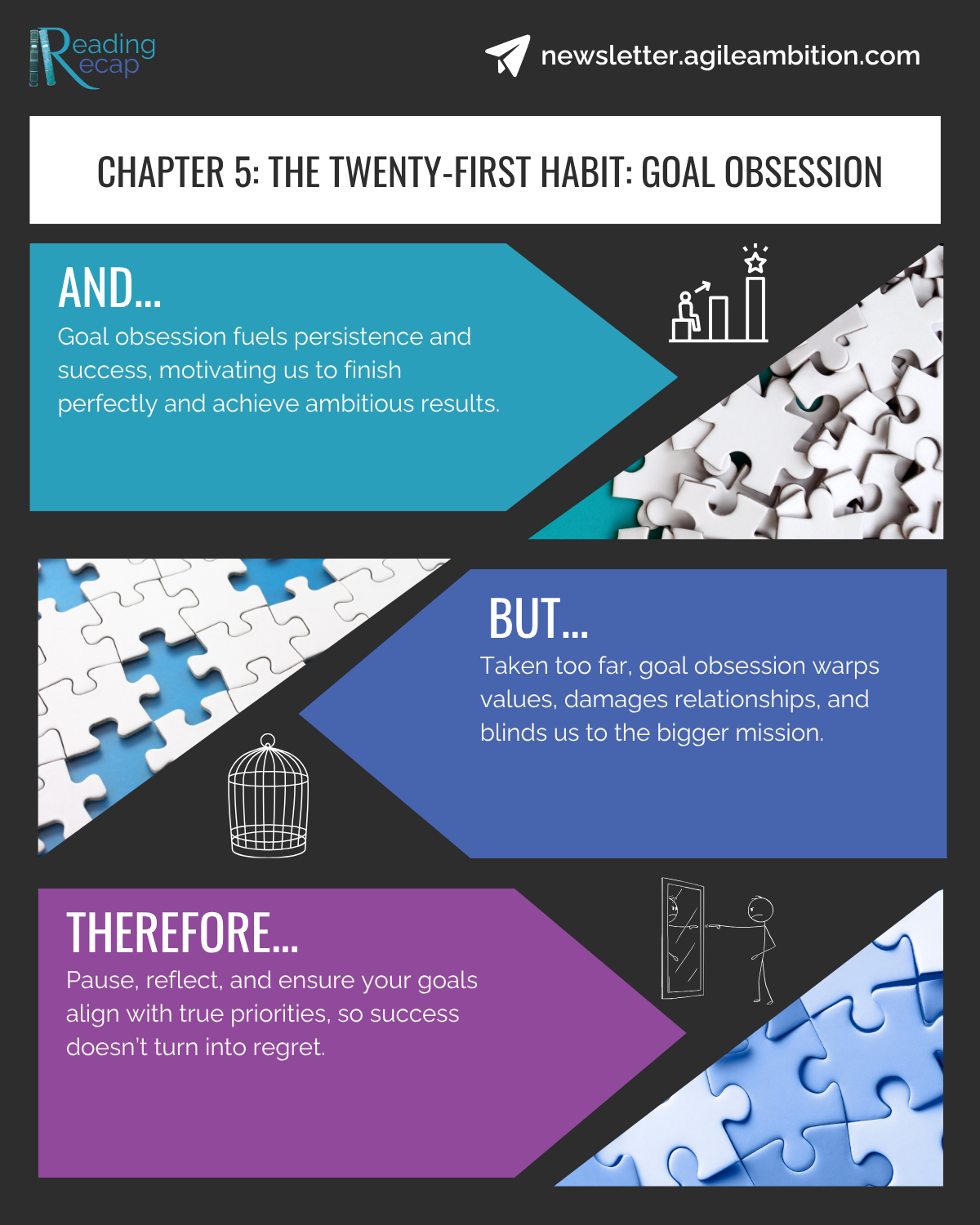
- Definition Of Goal Obsession
- Creator Of Flaws, Not The Flaw
- Paradox Of Driven Success
- Mission Versus Objective
- Misreading Personal Wants
- Pleasing The Boss Trap
- People As Means Problem
- Candace’s Spotlight Lesson
- Bridge On The River Kwai Warning
- Costly Pursuit Irony
- Good Samaritan Study Contrast
- Conditions That Breed Obsession
- Recipe For Disaster
- Step Back And Reflect
- Mission Alignment Questions
Chapter 6: Feedback
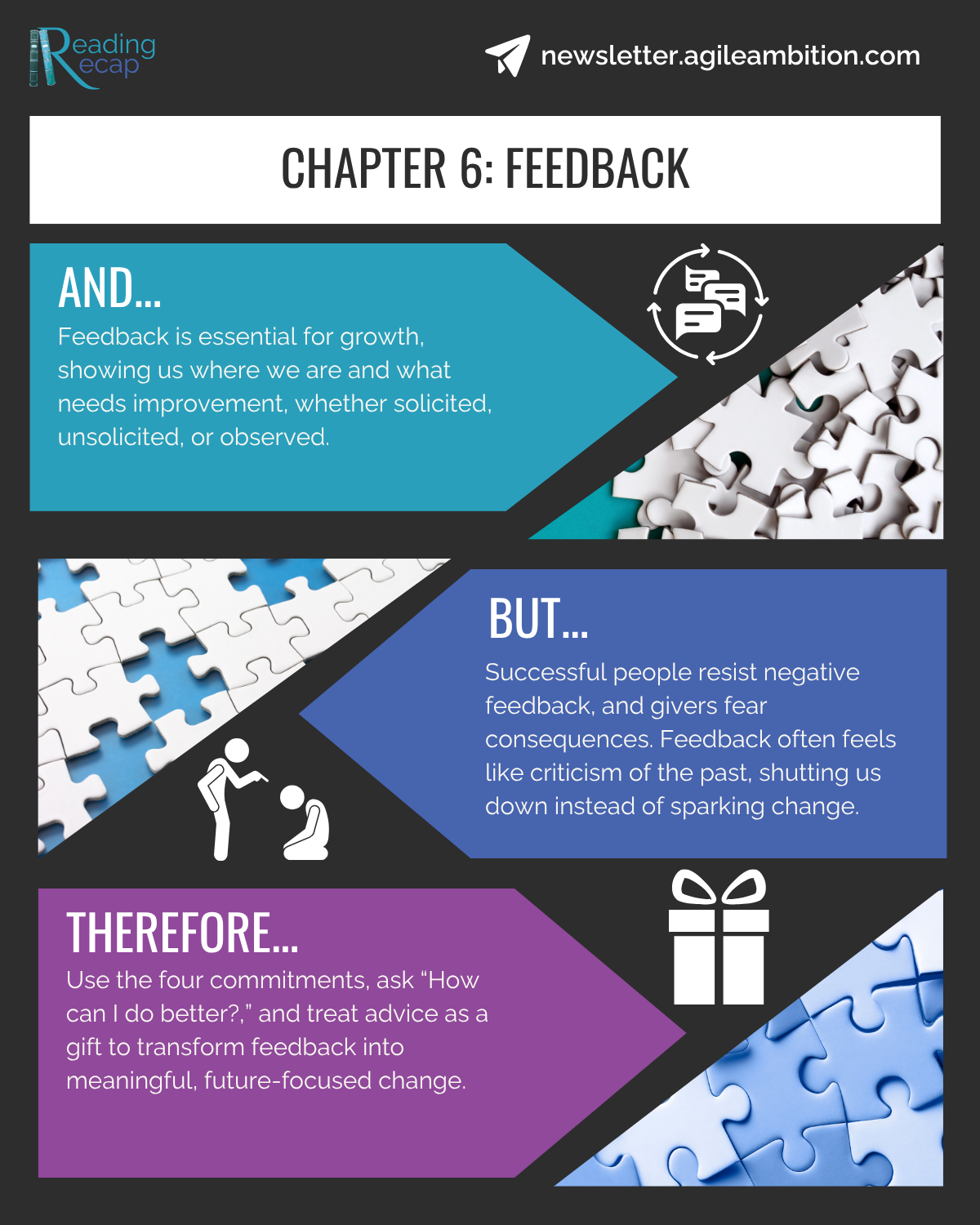
- Feedback’s Purpose and Limits
- Why Negative Feedback Fails
- 360-Degree Feedback Defined
- Two Problems With High Performers
- Past vs Future Focus
- Four Commitments Overview
- Let Go of the Past
- Demand the Truth
- Be Supportive, Not Cynical
- Mutual Improvement Pact
- Ask the Right Feedback Question
- Don’t Argue; Say “Thank You”
- Three Feedback Sources
- Value of Unsolicited “Blindsides”
- Johari Window Takeaway
- Observational Feedback in Action
- Five Observation Drills
- Home as Honesty Mirror
- Pick Raters Like Jury Selection
- Confidential Feedback’s Advantage
- Feedback Is Baseline, Not the Fix
Chapter 7: Apologizing
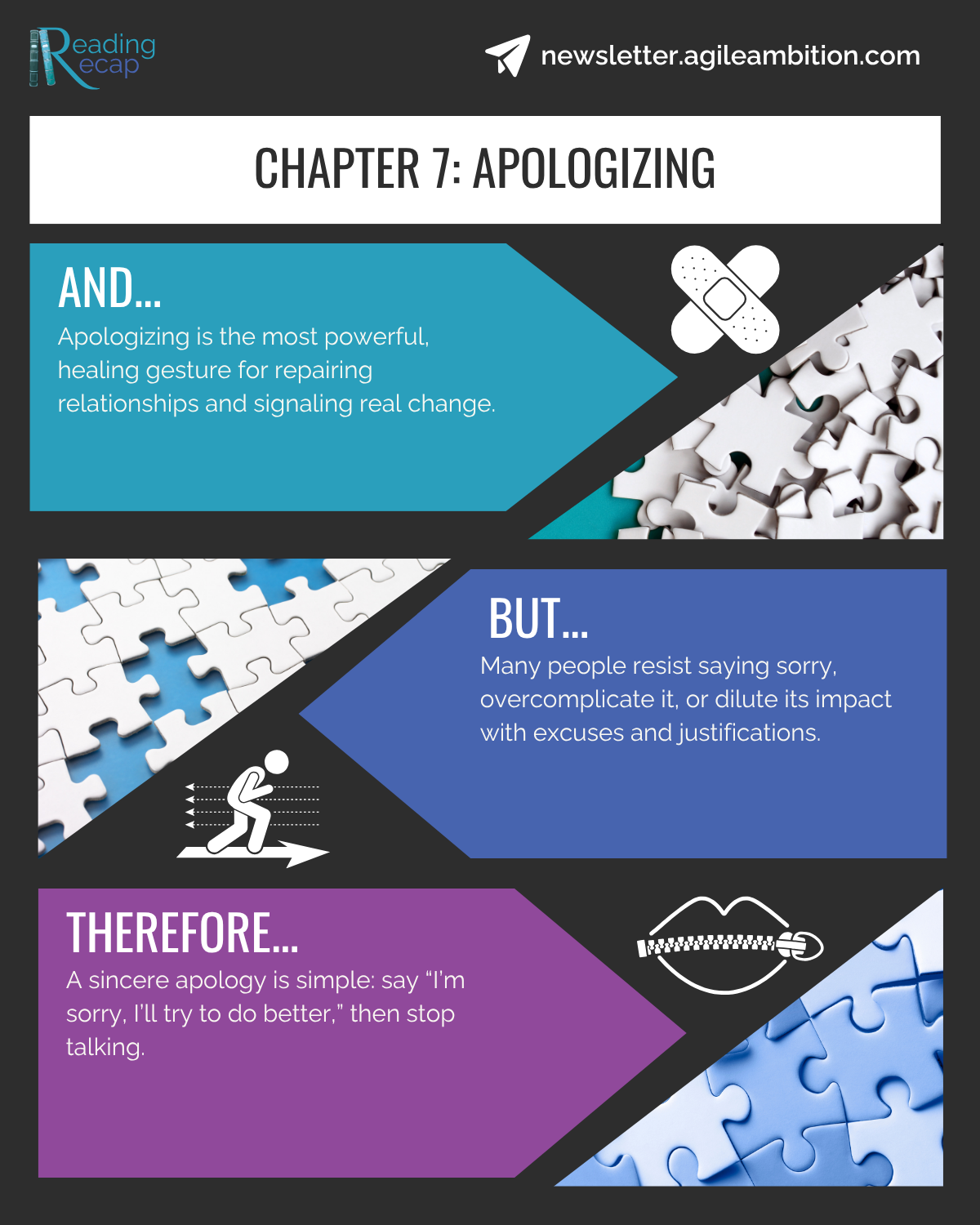
- Apology as the Magic Move
- Why Apology Matters
- Emotional Contract
- Closure Enables Progress
- Workplace to Home Transfer
- Recognizing Neglect Patterns
- Model Apologia
- Simple Apology Formula
- Don’t Over-Explain
- Speed Matters
- Causes vs. Change
- Healing Begins Here
- Cost and Return
- Consequences of Silence
- Promise of Better
- Three Magic Moves
Chapter 8: Telling the World, or Advertising
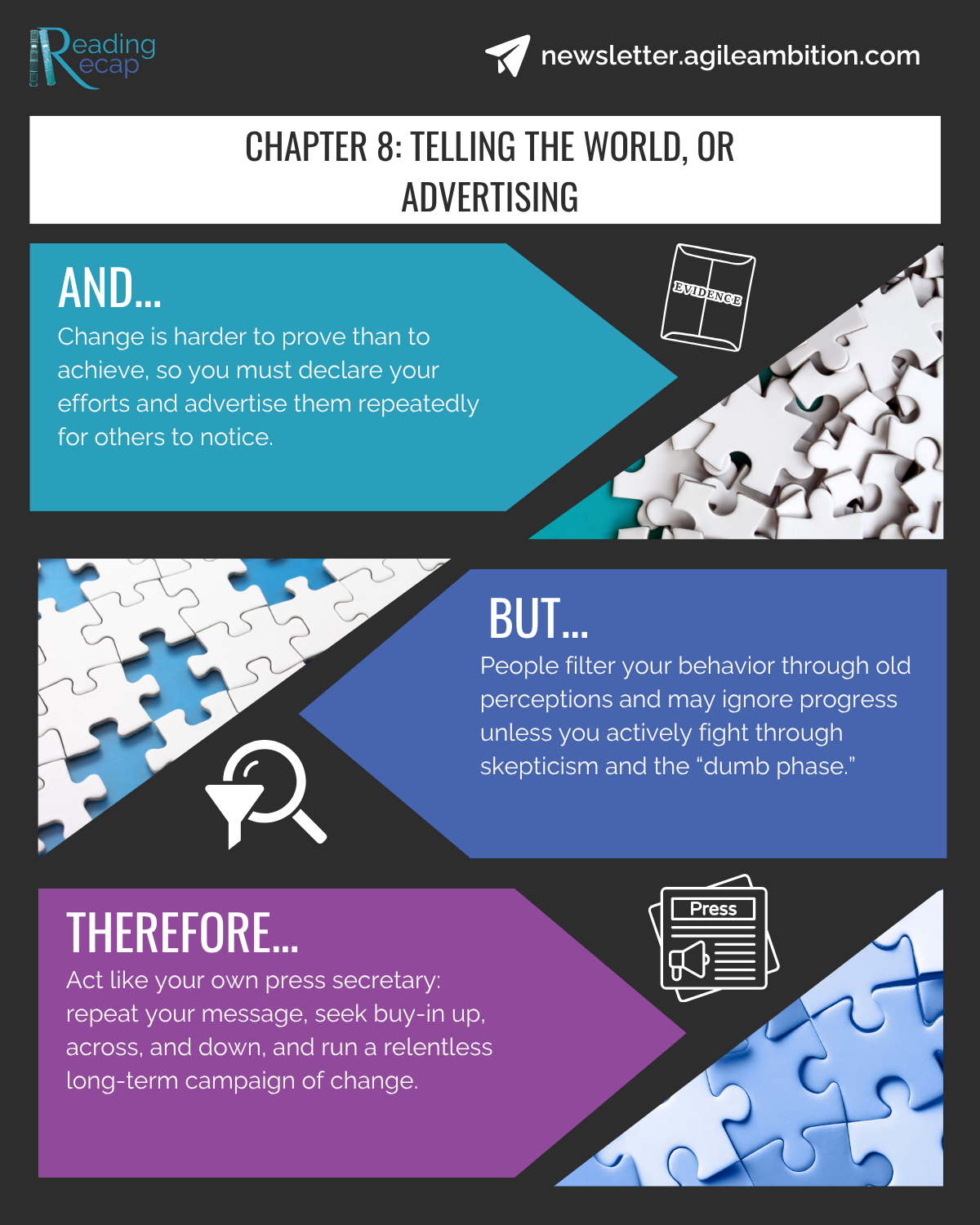
- Apology Must Be Followed By Advertising
- Perception Lags Real Improvement
- Put Change on Their Radar
- Repetition Is Non-Negotiable
- Expect a “Dumb Phase”
- Avoid “One, Two, Three, Seven”
- Woo Up, Over, and Down
- Recruit Your Colleagues
- Be Your Own Press Secretary
- Daily Press-Conference Mindset
- Campaign for “Votes”
- Think in Weeks and Months
Chapter 9: Listening
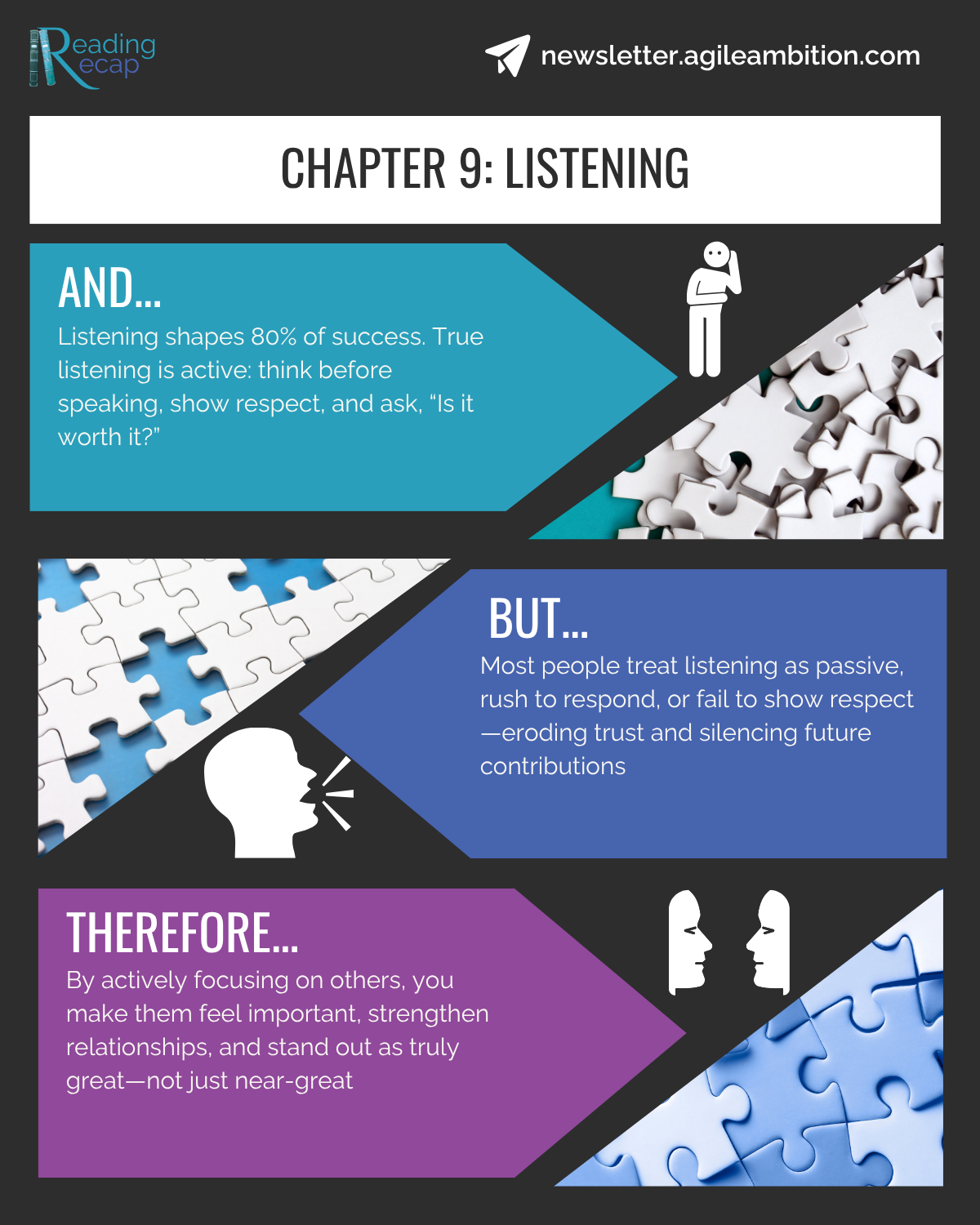
- Listening Is An Active Skill
- Think Before You Speak
- Respect Signals Real Listening
- The “Worth It?” Check
- Reactive Costs
- Listening Shapes Perception
- Other-Focused Mindset
- Great vs. Near-Great
- Exemplars of Attention
- Make It Consistent
- Concentration Drill
- Tactics That Matter
- Paradox of Humility
- First-Date Focus, Always
Chapter 10: Thanking
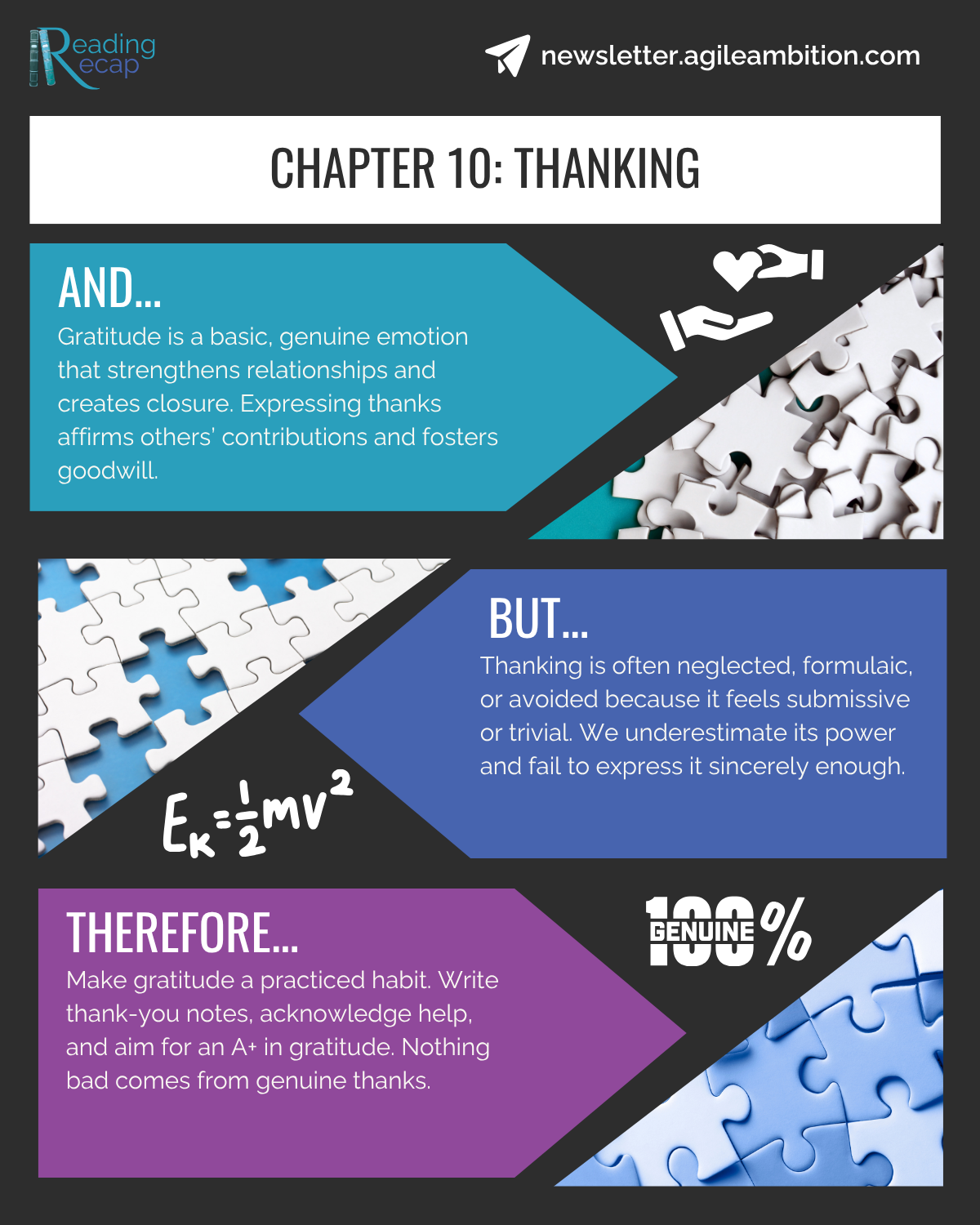
- Why Thanking Works
- Gratitude Is Complex
- Closure Through “Thank You”
- A Wake-Up to Appreciate
- Become a Gratitude Expert
- The 25-Name Exercise
- Gratitude Reveals Growth Areas
- Ripple Effects of Thanks
- Thanking Is Underused
- Manners vs. Meaning
Chapter 11: Following Up
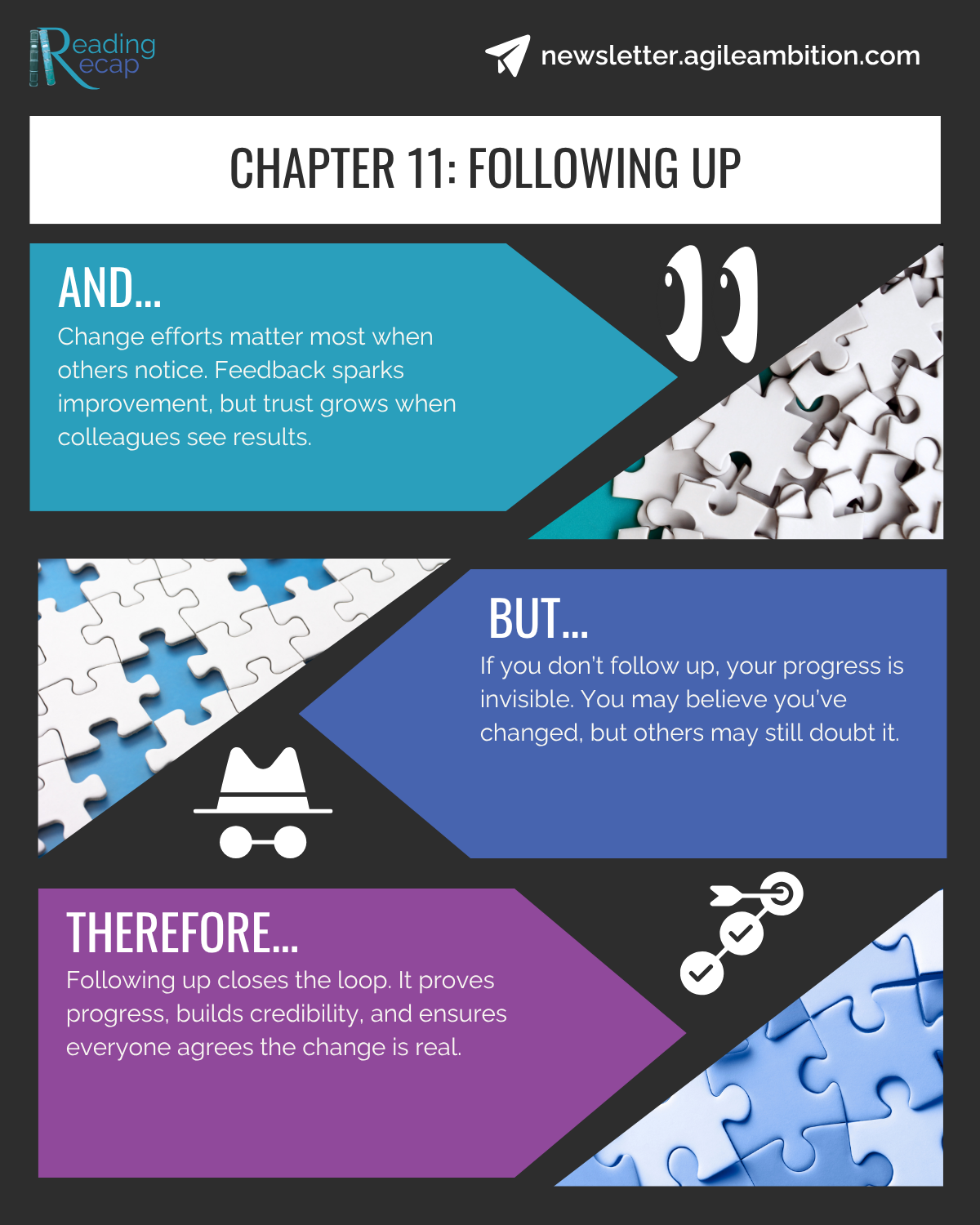
- Follow-Up Defined
- The Difference-Maker
- Persistence Timeline
- Koch’s Question Strategy
- Measurement Over Assumptions
- Knowing vs. Doing Gap
- Perceived Effectiveness
- Attention Effects
- Process, Not Event
- Accountability Partner
- Daily Questions Utility
- Coach Candidates
- Coach Criteria
- Simple Setup
- Social Proof Loop
- Cost of Neglect
Chapter 12: Practicing Feedforward
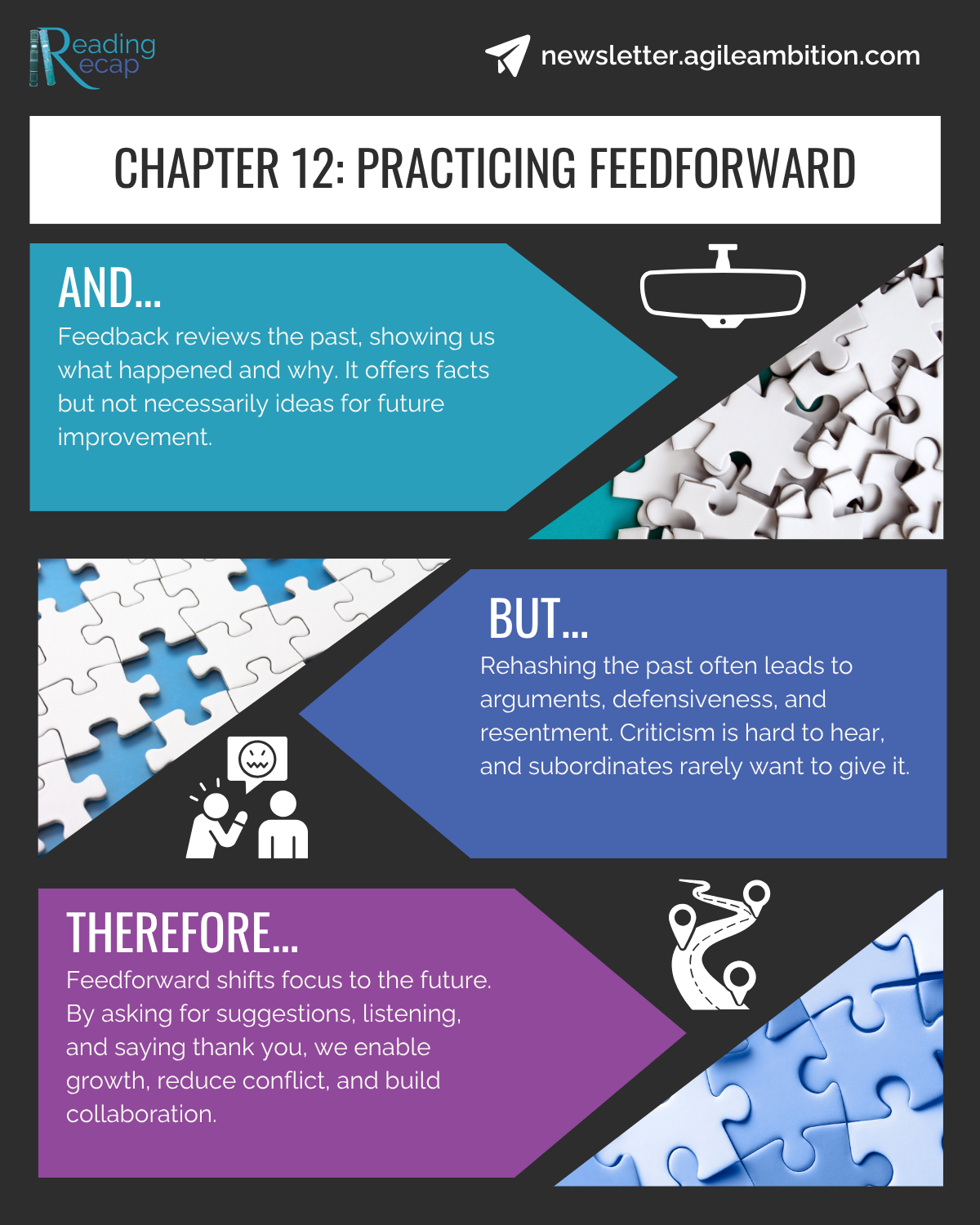
- Feedforward Definition
- Four-Step Method
- One Behavior Focus
- Anyone Can Help
- Two Suggestions Rule
- No Past Allowed
- Thank-You Only
- Specific Over Generic
- Overcoming Power Barriers
- Motivation Fit
- Change the Future
- Two-Way Traffic
- Continuous Practice
- Let Go of History
- Focus on the Road
- Foundational Skills
- Ownership by Others
- Solution Orientation
- Simplicity Advantage
- Safe for Givers
Chapter 13: Changing: The Rules
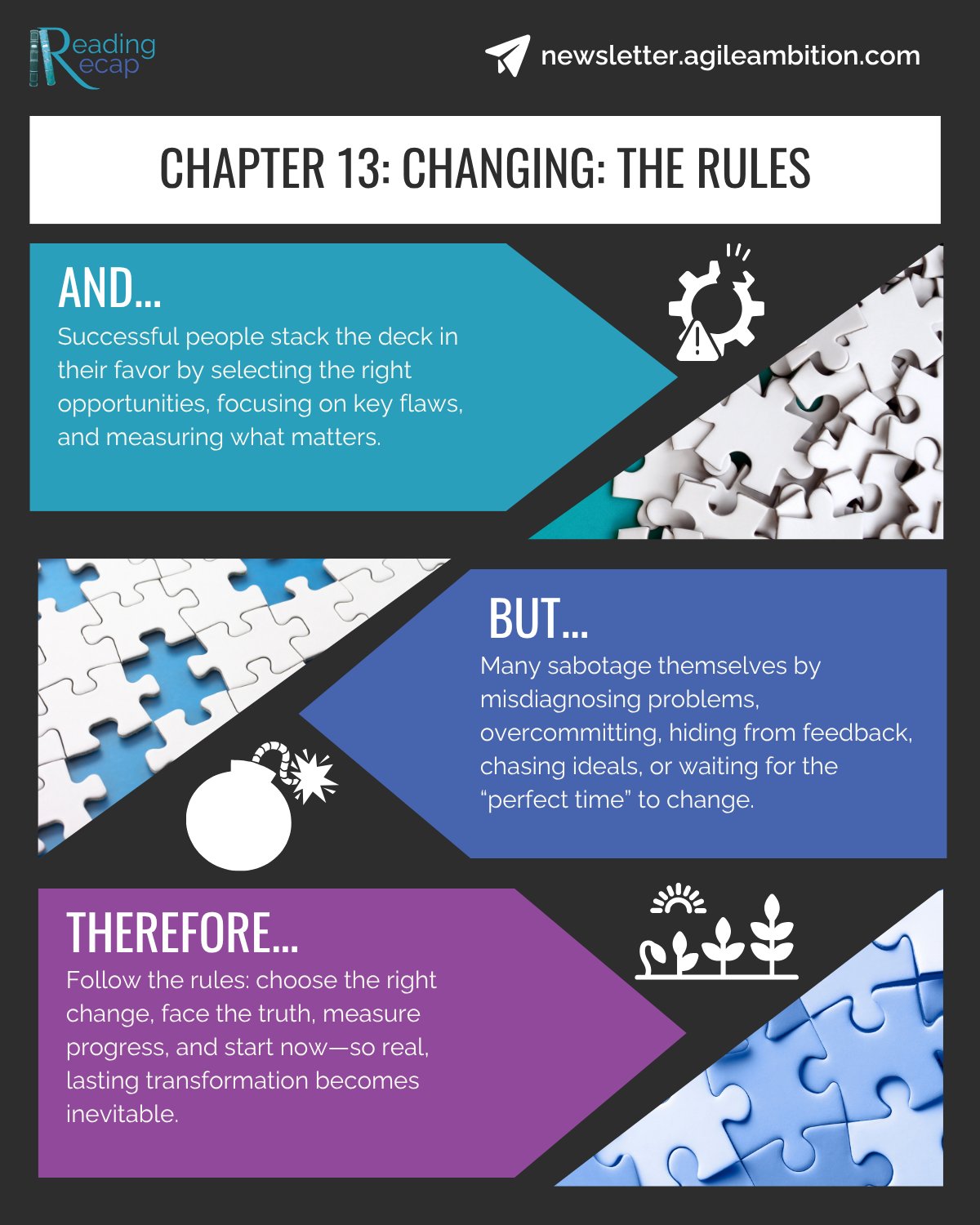
- Stack The Deck
- Client Selection Matters
- Symptom vs. Disease
- Behavior vs. Skill
- Miswanting vs. Mischoosing
- Focus the Change
- Short Game Priority
- Face Necessary Truths
- No Ideal Executive
- One Bullet Rule
- Measure Soft Stuff
- Incentives That Work
- Start Now Bias
- Goal Friction Factors
- Mission Neutrality
- Listen to the Data
Chapter 14: Special Challenges for People in Charge
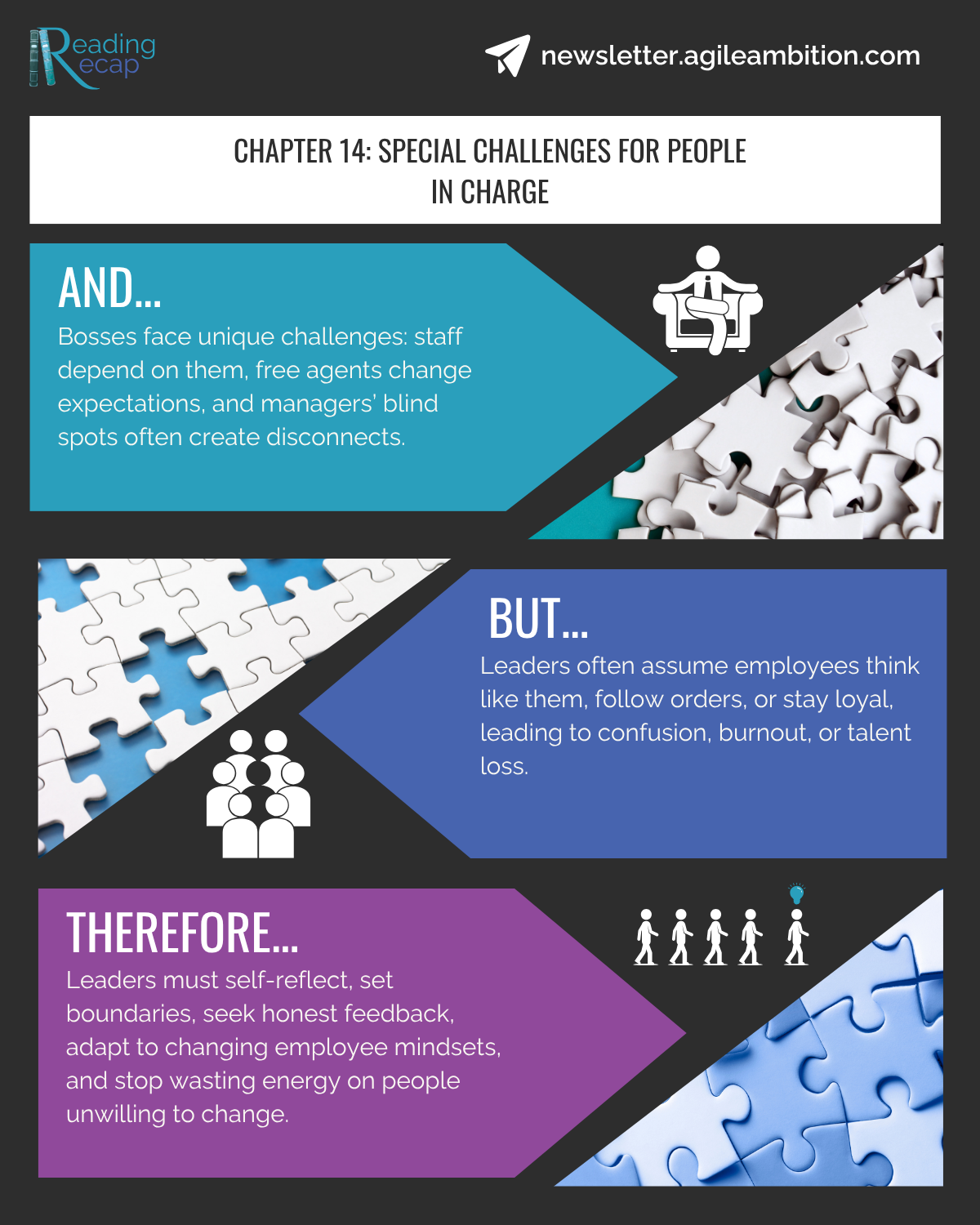
- Product Warnings For Bosses
- Imus-Style Clarity
- Honest Self-Disclosure Works
- Assistant Playbook Payoff
- Relevance Over Precision
- Guard Your Face Time
- Not Managing “You”
- Debate Isn’t Dialogue
- Change Requires Follow-Up
- Free-Agent Mindset Shift
- Four Managerial Prejudices
- Motivation Misreads
- Strategic Alliance Lens
- Know When Not To Coach
- Diagnose the Real Problem
Coda: You Are Here Now
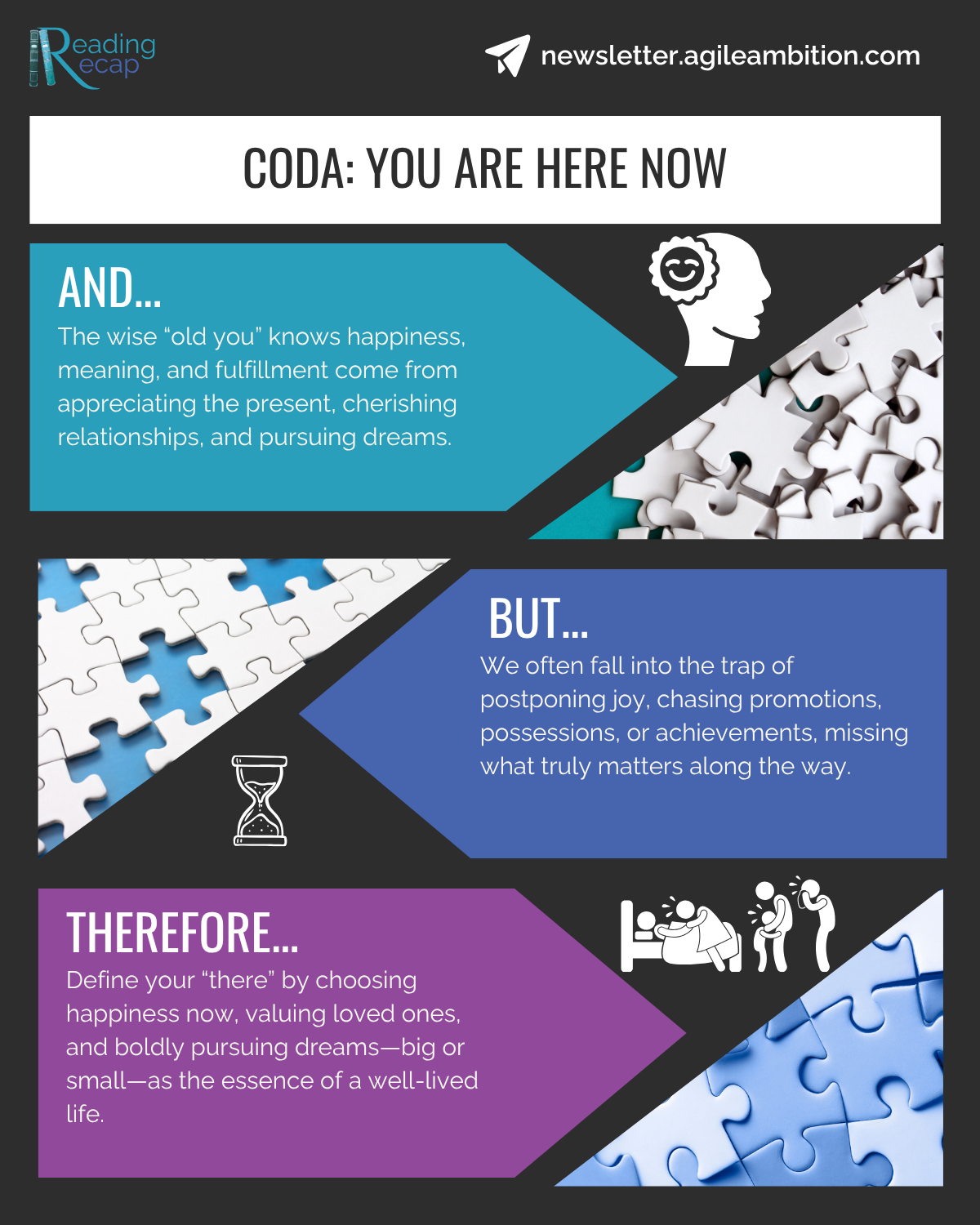
- Define Your “There”
- Perspective From Age
- Two-Level Self-Advice
- Reject the Great Western Disease
- Appreciate What You Have
- Friends and Family First
- Follow Your Dreams
- “Did I Try?” Test
- Why Stars Stay
- Meaning Over Money
- Apply Wisdom Now
- Begin the Journey
Appendix
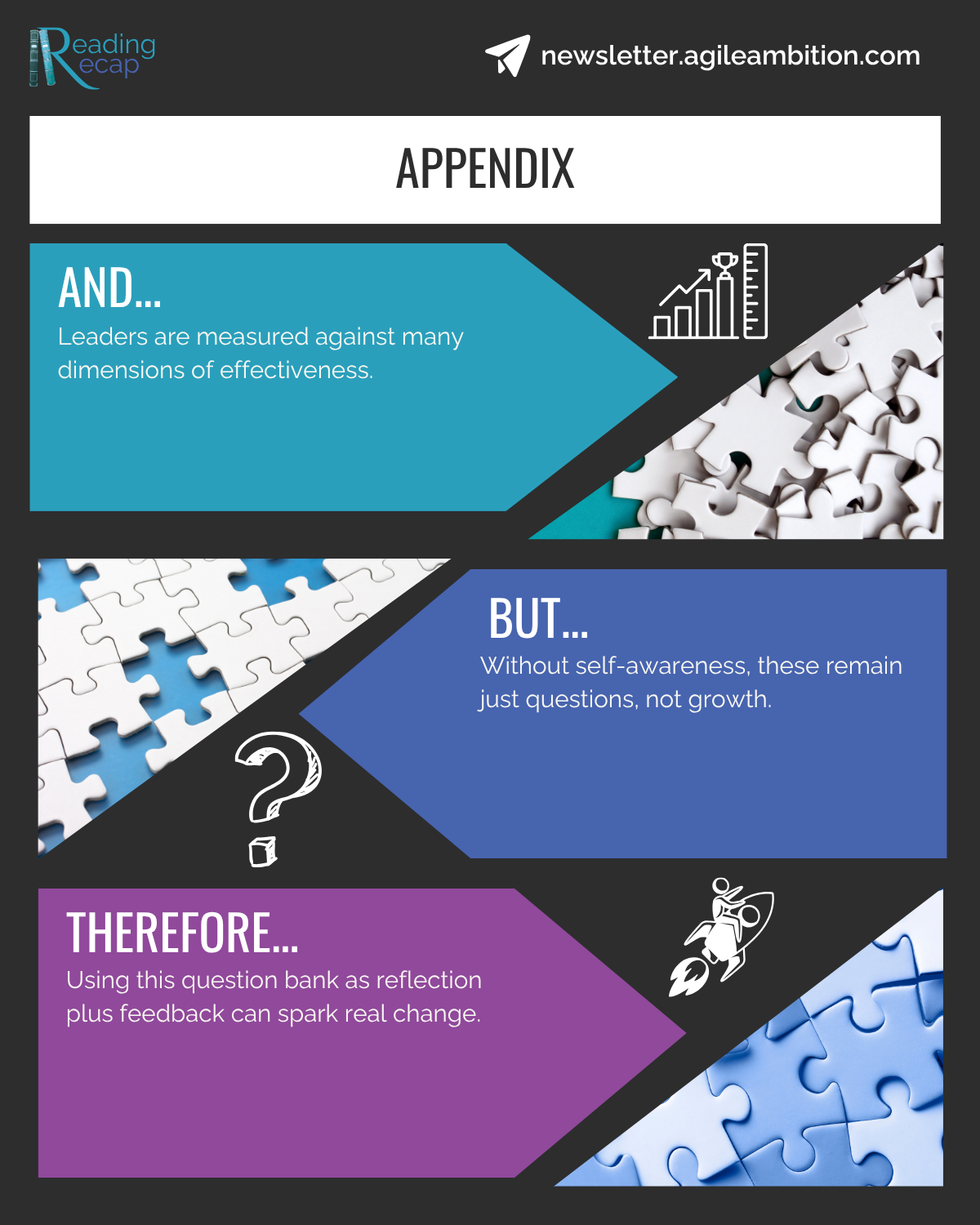
Lingering Questions
- How can I ask others to provide 360 feedback in a way that’s not lame or inefficient?
- How can I balance gratitude w/ noise and my need to minimize additional disruption?
- If my self-perception is inflated, how can I ground it in reality?
- If people act mainly in their own best interest, how can I better understand those interests to become more influential?
- If feedback from others is paramount to change, how do I avoid chasing advice that does more harm than good?
- How do I balance filtering unhelpful advice without alienating the person offering it?
- How can I be more genuine and freely give gratitude?
.png)